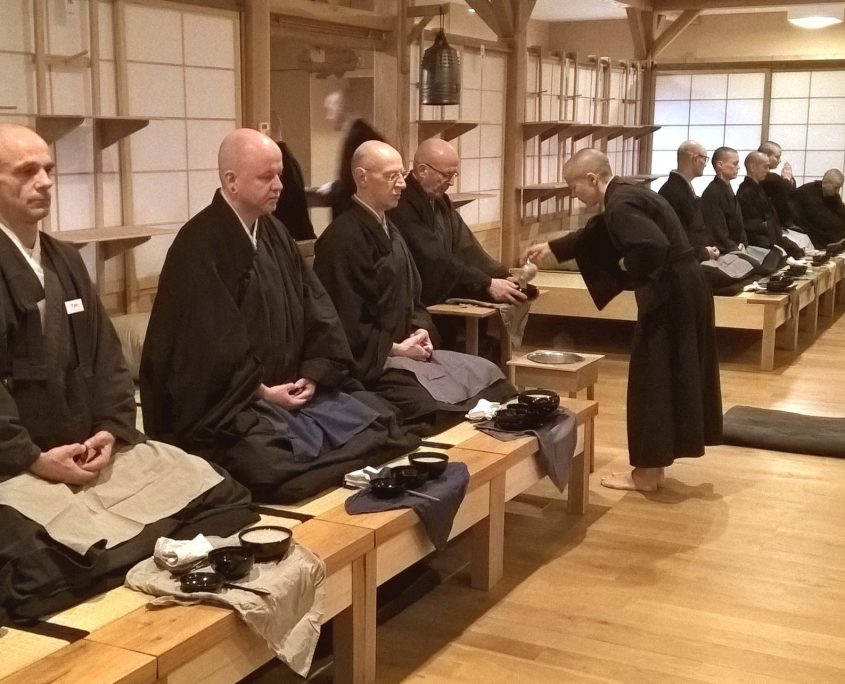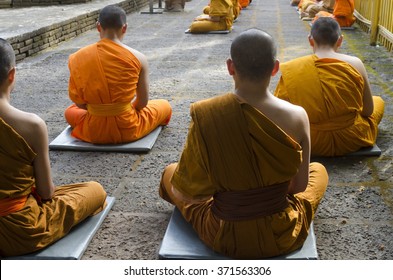Mindfulness and meditation have become more popular these days, known for their benefits in stress and burnout reduction. But there are so many styles and traditions. Some are more ancient, with more religious or spiritual forms. Others have more modern adaptations. Which one to choose to start with? Learn the origins, main characteristics of each, and decide if it is for you.
Japanese Zazen meditation
What is it?
Zazen in Japanese means “seated Zen”, or “seated meditation”. It originated from Zen Buddhism. “It began in China, spread to Korea and Japan, and became very popular in the West from the mid 20th century” (the BBC). Zen was brought to Japan in the 13th Century Dogen Zenji (1200~1253), known as the Soto Zen.
Is it for me?

- Forms: Fine Japanese forms with a lot of rituals.
- Philosophy: Enlightenment is obtained by seeing one’s original mind (or original nature) directly; without the intervention of the intellect. Zen does not depend on words – it has to be experienced in order to ‘understand’.
- Meditation: Meditation without object. Simply sit down with no effort or intention to concentrate. Eyes downs (not closed). Chanting, prostrations or group readings. Emphasis on the right posture and attention to details of rituals. Two sittings are alternated with one slow walking (kinhin), which can be indoor.
A personal note: Personally I am a fan of zazen because I love the charm of Japanese finesse. But with some rituals and chanting, you might want to see if you like it or not.
Where to practice
Some places to practice in Europe, the United States, Japan
Tibetan Vipassana meditation
What is it
“Vipassana” means “insight” or “clear seeing”. Vipassana-meditation comes from the Theravada Buddhist tradition dating back to 6th century BC, with widespread practice in Tibet and East Asia.
Is it for me?

- Forms: fewer formalities and rituals attached to the practice, compared to zazen
- Philosophy: Insight into the true nature of reality as impermanence” and non-self
- Meditation: Close observation of the breathing, the bodily and mental changes. Continued attention to sensation. Eyes closed. Walking meditation (can be outside, not specifically during a sitting session like zazen)
A personal note: Vipassana is excellent to help you ground yourself in your body, and understand how the processes of your mind work. If you are completely new to meditation, Vipassana is probably a good way to start.
Where to practice
Where to find it? List of Vipassana centers in the world
Mindfulness meditation
What is it?
Mindfulness can be traced back to the yoga traditions of Hinduism. The modern form is an adaptation from traditional Buddhist meditation practices, especially Vipassana. But it also has strong influence from other lineages, such as the Vietnamese Zen Buddhism from Thich Nhat Hanh). It focuses on the practices to pay attention to the “present moment”, without living in “automatic mode”.
Is it for me?

- Form: In addition to sitting meditation, there is also the practice of mindfulness during our daily activities: while eating, walking, and talking. Free of religious forms.
- Philosophy: Importance of the present moment, accepting and non-judgmentally paying attention to the sensations, thoughts, and emotions that arise.
- Meditation: Attention to the breath, sometimes with body scan techniques or citing poems to enhance concentration. Mindful during other activities (walking, eating, cooking…). You can practice mindfulness anytime, anywhere, and with anyone by showing up and being fully engaged in the here and now.
Personal note: It is the type of meditation that is most taught for the general public, without religious rituals (schools, hospitals). The practices are super simple. It often involves nothing more than paying attention to what you do. For example, your breath while sitting, your body while walking, the taste of what you eat. What is difficult is to maintain your practice in time. Retreats for parents and children exist with games and animations during summer at Plum Village (France). My children went there and enjoyed very much.
Where to practice:
Europe (Plum village, France, Germany), US
Meditation for stress relief and burnout reduction
More or less subtle or complex in religious forms, all of the meditation traditions above have one thing in common. They help your mind and body to calm down, by paying attention to your breath and being mindful of our thoughts and body tensions.
For any novice meditator, I would say there is no importance of the forms. Start with something available nearby your place that works for your lifestyle. Surround yourself with a community that can support you with positive energy and maintaining your practice.
Will you give it a try today?
Read more:
Joy right now – 7 easy mantras to start this week
6 easy ways to be happier: How to practice mindfulness in eating

